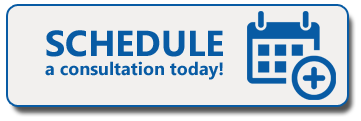
The holidays are fast approaching, which means it is time to start doing some year-end tax planning. The Tax Cut and Jobs Act will mean lower tax bills for many Americans. That does not mean you can ignore tax planning. Being lazy will likely mean you will pay more taxes than you have to. Year-end money moves Los Angeles to slash your tax bills.
Here are six year-end tax moves you should make if you want to shrink your tax liability. Keep in mind many of you in high-tax states could end up paying more in taxes thanks to the Trump Tax Plan. I know many of my clients in California and New York are seeing double-digit tax increases this year.
By David Rae Certified Financial Planner™, Accredited Investment Fiduciary™
-
1) Max out your Retirement Accounts to Save on Los Angeles Taxes
Would you rather write a check to yourself or the government? That seems like a pretty easy choice for me. You have until Tax Day to make contributions to a Traditional IRA or a Roth IRA. But there is no advantage waiting until the last minute. For 2020, you can potentially contribute $6,000 to an IRA or Roth IRA. There is an additional $1,000 catch up contribution allowed for those who have reached the age of 50.
Workplace retirement accounts will mostly need to be funded by the year end. That is the case for the employee contribution but more time will be allowed for the business portion contribution. For a 401(k), you can contribute up to $19,500, pre-tax, in 2020. An additional catch up contribution, up to $6,500, is allowed for those who are fifty or older.
-
2) Set up the Right Retirement Plan for your Business to Minimize Business Taxes
For the most successful of you reading this, you can stash away huge amounts of money on a pre-tax basis if you run your own small business, or are self-employed. You can potentially set up a profit-sharing plan which takes your retirement plan contribution limits up to $57,000 per year. For those who are 50 and older, the allowed contribution limit is $63,500.
If you want to save even more than those amounts (and get a larger tax deduction) think about also setting up a Rich Person Pension. This could take your total contributions above $200,000, per year. Talk with your financial planner and CPA about which retirement plan is best for your business.
If you have employees, you may need to also contribute to them as well. There are year-end deadlines to get business retirement plans set up. Some contributions may need to be made by the year-end. But, full contributions on the business side do not have to be made until you file your taxes. This could potentially give you almost a year to save up the money to contribute if you don’t happen to have a few hundred thousand dollars lying around.
-
3) Strategically Bunch your Itemized Deductions to lower your California Taxes
For the typical taxpayer who does not itemize deductions, 2020 brings a bit larger standard deduction ($12,400 for singles, $24,800 for married filing jointly). Generally speaking, this could be great for many people.
On the other hand, it means you may not actually get a tax break for many of the typical itemized deductions. Think donations to charity, mortgage deduction, property taxes, and even medical expenses.
If you are near or below the standard deduction threshold, you may benefit from what is becoming known as “bunching”. Put plainly, this means postponing or accelerating deductions into one tax year so you can capture a tax deduction for them.
Here are a few of the most common areas people can bunch tax-deductible expenses:
–Property Taxes – Depending on your local deadlines, you may be able to make three payments, instead of the typical two, in a single year. That would mean you would only have to make one payment in the opposite year. You pay the same amount in property taxes but increase your deductible amount. By doing so, you lower your net after-tax cost.
–Mortgage Payments – You can try and squeeze 13 mortgage payments into one year. Bunching payments in this way would allow you to capture more of the mortgage deduction. That would also result in having to make only 11 payments the following year. Again, the same amount paid to your mortgage, but you lower your net after-tax cost of living in your home.
And More Year-End Tax Deductions
–Charitable Contributions – Not everyone is intrinsically motivated to donate. The reality is that tax deductions for charitable contributions are a motivator to donate (for some people at least). This tax deduction also means we can potentially afford to donate more money. Some tax-savvy donors are bunching two years of donations into a single year in order to get a bigger tax break.
Charities are in desperate need or more support this year. Even if you don’t itemize, you can still deduct up to $300 in charitable deductions this year.
–Medical Expenses – If you have a large number of medical expenses and will be itemizing this year, consider incurring more medical expenses. Are there tests or treatments that you have been avoiding? It may be smart to bunch them together. You may end up with a larger tax deduction. In many cases, you will also have hit your deductible thereby leaving the insurance company on the hook to pick up more of the tab. Win. Win.

Make your home a happier place – by paying fewer taxes.GETTY
4) Consider Donor-Advised Funds if you want to pay less in Taxes
While bunching charitable deductions sounds nice, I know many taxpayers who donate money here and there as people ask. Whether they are donating to a charity bike ride, like the AIDS/LifeCycle, or a walk to fight cancer, all those donations can really add up.
Using a donor-advised fund (DAF) may help alleviate the need to spend time bunching your donations or upsetting friends during your non-donating year. These funds can be set up with a custodian like TD Ameritrade or Schwab, for example. They won’t be tied to a specific charity, which means you can direct the funds to multiple non-profit organizations. Donors will receive a tax deduction in the year they make the contribution to the DAF. The money can stay in the fund (and likely be invested) and grow tax-free until you decide to make a distribution to charity.
These funds do come with a bit of extra legwork, cost and record keeping. Therefore, they are likely only appropriate for people who either have high income and/or are looking to donate substantial amounts of money.
–Extra Credit to Save Even More Taxes
Highly appreciated stocks and funds can be donated directly to a DAF. You will get a deduction for the full market value of your donation and avoid having to pay capital gains on the appreciation when the holding is sold.
5) Qualified Charitable Distributions for Lower Taxes
This is a tax-saving strategy you can use even if you don’t plan to itemize. If you are subject to Required Minimum Distributions (RMDs), you can send funds directly from your retirement account to a non-profit or charity. Unfortunately, you can’t make this distribution directly to a donor-advised fund.
This will help lower your taxable income. You won’t have to realize the income from the RMDs from your retirement account. However, you won’t get a further tax deduction for your charitable donation.
6) Consider Tax-Loss Harvesting to pay fewer Taxes, Los Angeles
The end of the year could be a good time to trim some of the losers in your portfolio. You can deduct up to $3,000 of short-term losses against regular income. (You can carry forward additional losses if you have them). Look to sell shares that are down and that you have owned less than one year. Don’t forget to use tax-harvesting strategies. You can’t buy back the security you just sold (or something identical) within 30 days. If you do, the IRS will disallow the loss.
You don’t want to have that money just sitting in cash and out of the market. Consider purchasing a similar (not identical) fund or ETF, perhaps an index fund. Hold it for 30 days, or more, and either keep it or sell and repurchase your old holding, ideally at a lower price than you originally paid.
I know you are all busy with the holidays and work. Take a quick breather and see how many of these tax-saving strategies can work to your benefit. The money you could potentially save might make the hassle more than worth it. For those who just can’t deal with this stuff, work with a trusted financial planner to help keep you on track for your financial goals.

Take these year end tax moves Los Angeles and keep more of your hard earned money.
Live for Today, Plan for Tomorrow.
DAVID RAE, CFP®, AIF® is a Los Angeles Financial Planner with DRM Wealth Management. He has been helping friends of the LGBT community reach their financial goals for over a decade. Nightline has called him a “Tax Wizard in an Expensive Suit” He is a regular contributor to the Advocate Magazine, Forbes.com, and Huffington Post as well as the author of the Financial Planner Los Angeles Blog. Follow him on Facebook or via his website www.davidraefp.com
Year-End Tax Moves Los Angeles give this Financial Planner LA post a read:
Is My Los Angles Home Equity Line Still Deductible? HELOC Tax Deduction










[…] 6 Ways to Slash Your Taxes at Year End […]
[…] to lower your taxes, even at the last […]
[…] the faster wealth can build up. Talk with a Fiduciary Financial Planner to see what other tax-saving opportunities you might be able to […]
[…] the faster wealth can build up. Talk with a Fiduciary Financial Planner to see what other tax-saving opportunities you might be able to […]
[…] accounts can benefit from knowing about tax-loss harvesting. Saving money on taxes is saving money on taxes. Granted, the bigger your accounts or, the higher your income, the bigger the tax savings may […]
[…] accounts can benefit from knowing about tax-loss harvesting. Saving money on taxes is saving money on taxes. Granted, the bigger your accounts or, the higher your income, the bigger the tax savings may […]
[…] accounts can benefit from knowing about tax-loss harvesting. Saving money on taxes is saving money on taxes. Granted, the bigger your accounts or, the higher your income, the bigger the tax savings may […]
[…] accounts can benefit from knowing about tax-loss harvesting. Saving money on taxes is saving money on taxes. Granted, the bigger your accounts or, the higher your income, the bigger the tax savings may […]
[…] accounts can benefit from knowing about tax-loss harvesting. Saving money on taxes is saving money on taxes. Granted, the bigger your accounts or, the higher your income, the bigger the tax savings may […]
[…] accounts can benefit from knowing about tax-loss harvesting. Saving money on taxes is saving money on taxes. Granted, the bigger your accounts or, the higher your income, the bigger the tax savings may […]
[…] to implement as well as much less time consuming and costly. Bottom line, who doesn’t like saving money on taxes. Granted, the bigger your taxable investment account or the higher your income, the bigger the tax […]
[…] in addition to a lot much less time consuming and dear. Backside line, who doesn’t like saving money on taxes. Granted, the larger your taxable funding account or the upper your revenue, the larger the tax […]
[…] to implement as well as much less time consuming and costly. Bottom line, who doesn’t like saving money on taxes. Granted, the bigger your taxable investment account or the higher your income, the bigger the tax […]
[…] to implement as well as much less time consuming and costly. Bottom line, who doesn’t like saving money on taxes. Granted, the bigger your taxable investment account or the higher your income, the bigger the tax […]
[…] to implement as well as much less time consuming and costly. Bottom line, who doesn’t like saving money on taxes. Granted, the bigger your taxable investment account or the higher your income, the bigger the tax […]
[…] to implement as well as much less time consuming and costly. Bottom line, who doesn’t like saving money on taxes. Granted, the bigger your taxable investment account or the higher your income, the bigger the tax […]
[…] to implement as well as much less time consuming and costly. Bottom line, who doesn’t like saving money on taxes. Granted, the bigger your taxable investment account or the higher your income, the bigger the tax […]
[…] to implement as well as much less time consuming and costly. Bottom line, who doesn’t like saving money on taxes. Granted, the bigger your taxable investment account or the higher your income, the bigger the […]
[…] to implement as well as much less time consuming and costly. Bottom line, who doesn’t like saving money on taxes. Granted, the bigger your taxable investment account or the higher your income, the bigger the tax […]
[…] to implement as well as much less time consuming and costly. Bottom line, who doesn’t like saving money on taxes. Granted, the bigger your taxable investment account or the higher your income, the bigger the tax […]
[…] implement as well as much less time consuming and costly. Bottom line, who doesn’t like saving money on taxes. Granted, the bigger your taxable investment account or the higher your income, the bigger the […]
[…] to lower your tax bill? Do you want to retire someday? If you answered yes to both, contributing to your retirement […]